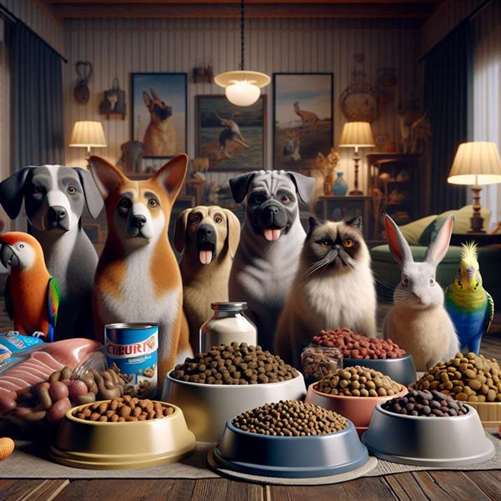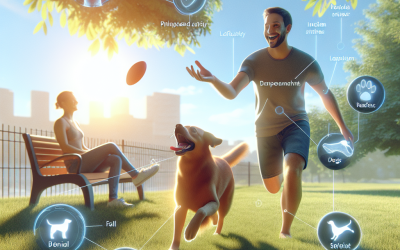Is Your Pet Not Eating Their Food? Find Pet Food They Love
Introduction
Did you know that up to 15% of pets may refuse their food at some point in their lives? That’s a staggering number, and it highlights a significant concern for pet owners everywhere. Pet health is intricately linked to what they eat, and when they become picky eaters, it can create a cascade of issues, from nutritional deficiencies to behavioral problems. Recent studies have shown that the dietary preferences of pets can affect their overall well-being, making it crucial for owners to understand why their furry friends may turn their noses up at their meals.
When it comes to feeding pets, many owners find themselves grappling with the challenges of enticing their companions to eat. Whether you have a dog who suddenly refuses kibble or a cat who snubs wet food, the struggle is real. This article aims to provide insights into why your pet might not be eating their food, actionable tips for discovering meals they love, and the importance of maintaining a balanced diet for their health.
If you’re wondering, Is Your Pet Not Eating Their Food?, you’re in the right place. Let’s explore the reasons behind this behavior and how you can encourage your pet to enjoy their meals once again.
For more insights, consider checking out our article on pet dietary needs.
What is Is Your Pet Not Eating Their Food?
Definition
Is Your Pet Not Eating Their Food? is a common concern among pet owners, reflecting a scenario where pets refuse to consume their meals. This behavior can stem from various factors, including health issues, environmental changes, or simple pickiness. Understanding the root cause is essential for addressing the issue effectively.
Historical Context
Over the years, pet feeding habits have evolved significantly. In the past, many pets were fed table scraps or low-quality commercial food. However, with increasing awareness of pet nutrition, owners are now more inclined to choose high-quality, balanced diets. This shift has also led to a wider variety of pet food options, which can sometimes overwhelm pets and owners alike.
The Importance of Is Your Pet Not Eating Their Food
The issue of pets not eating their food holds considerable relevance in the realm of pet wellness. When pets refuse food, it can indicate underlying health issues, ranging from dental problems to more serious medical conditions. Therefore, it’s vital for owners to consult with veterinarians to determine whether the refusal is a phase or a sign of a more significant health concern.
Is Your Pet Not Eating Their Food in the Context of Pet Care
This issue directly impacts pet care practices. Owners must be vigilant about their pets’ eating habits and be proactive in identifying changes. Regular consultations with veterinarians can help ensure that any potential health issues are addressed before they escalate.
Key Players or Contributors
Influential figures in the pet food industry and veterinary science are constantly researching and developing strategies to help owners manage picky eaters. Understanding their advice can empower pet owners to make informed decisions regarding their pets’ diets.
For a deeper dive into common pet feeding issues, you can check out our resources that tackle these challenges head-on.

How Does Is Your Pet Not Eating Their Food Work?
The Mechanics of Is Your Pet Not Eating Their Food
Understanding why your pet isn’t eating involves exploring both behavioral aspects and physiological reasons. Pets may refuse food due to stress, environmental changes, or even boredom with their diet.
- Behavioral Aspects: Pets are creatures of habit. Changes in their routine, such as moving to a new home or the arrival of a new family member, can disrupt their eating patterns. This behavioral shift can lead to temporary food refusal.
- Physiological Reasons: Pets may also stop eating due to underlying health issues. Conditions such as dental disease, gastrointestinal problems, or infections can contribute to a loss of appetite. It’s essential to observe your pet for any signs of discomfort or illness.
The Role of Environment
The environment plays a crucial role in a pet’s willingness to eat. Factors such as noise, temperature, and the location of their food bowl can influence their eating habits. For instance, a noisy kitchen may deter a shy dog from approaching their food, while a cat might prefer their meal in a quieter, secluded area.
Identifying the Root Cause
To effectively address the issue, owners should conduct a thorough assessment of their pet’s situation. Here are some steps to consider:
- Observe Behavior: Take note of any changes in behavior, including lethargy or signs of discomfort.
- Assess the Environment: Evaluate if any recent changes may have affected your pet’s eating habits.
- Consult a Veterinarian: If the refusal persists, it’s crucial to seek veterinary advice to rule out any health issues.
Tips for Encouraging Eating
If your pet is not eating, there are several strategies you can employ to entice them back to their bowl:
- Experiment with Food Types: Sometimes, a simple change in food type or flavor can reignite your pet’s interest.
- Use Meal Toppers: Adding a delicious meal topper can make the food more appealing. Consider options like bone broth or pumpkin puree, which many pets find irresistible.
- Establish a Routine: Consistency in feeding times can help create a sense of security and encourage your pet to eat.
For more ideas on how to enhance your pet’s mealtime experience, you can explore our guide on how to serve a meal topper with your pet’s food.
Why Is Your Pet Not Eating Their Food? Common Reasons
Health-Related Issues
One of the primary reasons pets refuse food is health-related. Conditions such as dental disease, gastrointestinal disorders, or even stress can lead to a decreased appetite. If your pet is exhibiting other symptoms, such as vomiting or lethargy, it’s essential to consult your veterinarian promptly.
Dietary Preferences
Just like humans, pets can develop preferences for certain flavors and textures. If a pet has been fed a particular brand or type of food for an extended period, they may become bored or disinterested in it.
Changes in Routine
Pets thrive on routine. Changes in their daily schedule, moving to a new home, or the introduction of new family members can lead to anxiety, which may affect their eating habits.
Environmental Factors
The feeding environment can significantly impact a pet’s willingness to eat. Ensure that their food bowl is in a quiet, comfortable area, away from distractions and noise.
Stress and Anxiety
Pets can experience stress and anxiety just like humans. This emotional turmoil can stem from various sources, including loud noises, unfamiliar environments, or changes in family dynamics.
How to Encourage Your Pet to Eat
Finding the Right Food
To address the issue of Is Your Pet Not Eating Their Food, finding the right food is vital. Here are some tips:
- Consult with Your Veterinarian: Your vet can provide personalized recommendations based on your pet’s health and dietary needs.
- Trial and Error: Sometimes, it takes a bit of experimenting. Try a variety of flavors and textures to see what your pet prefers.
- Consider Specialized Diets: If your pet has specific health concerns, consider specialized diets designed to address those issues.
For example, some pets benefit from high-fiber diets, while others may require low-fat options.
Positive Reinforcement
Encouraging your pet to eat can also involve positive reinforcement techniques. Rewarding them when they show interest in their food can help create a positive association with mealtime.
Create a Feeding Schedule
Establishing a consistent feeding schedule can help your pet understand when to expect meals. This routine can reduce anxiety around meal times and encourage them to eat.
Use Interactive Feeders
Interactive feeders can make mealtime more engaging for pets, especially those who are easily bored. These feeders require pets to work for their food, stimulating their minds and appetites.
Future Trends in Pet Nutrition
The Rise of Personalized Pet Food
As we move forward, the trend towards personalized pet food is gaining momentum. More companies are focusing on creating tailored diets that cater to the unique needs of individual pets. This trend is driven by advancements in technology and a deeper understanding of pet nutrition.
Focus on Natural Ingredients
Pet owners are becoming increasingly aware of the benefits of natural ingredients. This awareness is leading to a rise in demand for pet foods that are free from artificial additives, preservatives, and fillers.
Sustainable Practices
Sustainability is becoming a key concern in pet food production. Many brands are exploring eco-friendly packaging, sourcing ingredients responsibly, and reducing their carbon footprint.
Probiotics and Gut Health
The importance of gut health is also becoming a focal point in pet nutrition. Probiotics and prebiotics are being incorporated into pet foods to support digestive health and overall wellness. For more information on probiotics for pets, check out our article on what can probiotics do for dogs and cats.
Conclusion
In conclusion, if you find yourself asking, Is Your Pet Not Eating Their Food?, remember that you are not alone. Many pet owners face this challenge, and
Resource Links:
- petmd.com: … When a dog has no appetite and isn’t eating food, this is called anorexia. Anorexia in dogs is not the same as anorexia nervosa in humans.
- thekennelclub.org.uk: Your dog may not eat for many reasons: if they’re in pain; are feeling anxious or stressed; if they’re unwell; feel nauseous; if they have side effects from …
- webmd.com: … Reasons your dog won’t eat · Illness. A decreased appetite in dogs is often a sign of sickness, especially if your dog is exhibiting other …




0 Comments